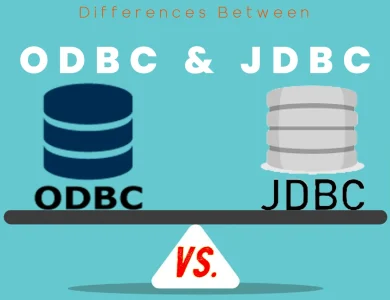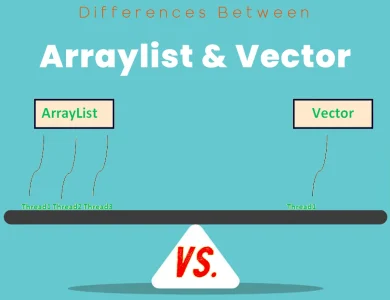Technology
Welcome to our comprehensive guide on the differences in terms and other items in the exciting world of technology! As technology continues to evolve at a rapid pace, it’s essential to stay updated with the latest terminology and understand the distinctions between various concepts and items. Whether you’re a tech enthusiast, a student studying technology, or simply curious about the field, this category page is here to enlighten you and provide valuable insights.
-

Differences Between SLR and DSLR
Delve into the nuanced disparities between Single Lens Reflex (SLR) and Digital Single Lens Reflex (DSLR) cameras, pivotal choices for photographers. While SLRs embrace film and traditional development, DSLRs leverage digital sensors for instant processing. Autofocus technologies vary, with DSLRs often incorporating advanced systems for superior performance. The optical viewfinder experience sees enhancements in DSLRs, featuring electronic viewfinders for real-time data. Live view functionality and high-definition video recording further distinguish DSLRs, catering to modern preferences. Size and weight considerations differ, impacting portability. Budget constraints play a role, as SLRs may offer a lower initial cost, while DSLRs present long-term savings with digital convenience. Uncover the right choice for your photography journey, balancing nostalgia and modern capabilities.
-

Differences Between 1080p and 1080i
Delving into the realm of high-definition resolutions, the distinctions between 1080p and 1080i go beyond mere pixel counts. The crux lies in their scanning methods – 1080p boasts progressive scanning, rendering each frame seamlessly for a detailed and elegant visual experience. On the flip side, 1080i employs interlaced scanning, alternating between odd and even lines, potentially compromising image quality, especially during dynamic scenes. Beyond resolution, the frame rate nuances further separate these HD siblings. While both support similar frame rates, 1080p's progressive nature ensures a smoother motion, contributing to a more immersive gaming and viewing experience. In contrast, 1080i's interlaced approach may introduce flicker, particularly noticeable during fast-paced sequences. Compatibility also plays a role in the choice between 1080p and 1080i. The former enjoys widespread support across modern displays, making it a versatile choice for various devices. Meanwhile, 1080i, historically tied to broadcast television, may encounter compatibility nuances on newer displays. For gamers, the decision involves more than pixels – 1080p's responsiveness and precision make it the preferred choice for those seeking a seamless gaming experience. In contrast, 1080i, with its potential interlaced lag, may not be the optimal pick for genres demanding quick reactions. In summary, understanding the distinctions between 1080p and 1080i empowers consumers to make informed decisions based on their preferences, whether it's for cinematic viewing, gaming, or everyday content consumption.
-

Differences Between Mono and Stereo Sound
Embark on a sonic exploration as we unravel the fundamental disparities between mono and stereo sound. Mono, characterized by its simplicity and singular channel, offers a direct audio experience, ideal for applications prioritizing clarity over spatial complexity. On the other hand, stereo sound, with its two channels—left and right—introduces an immersive dimension, creating a vibrant panorama that enhances depth and realism. The spatial separation in stereo allows for precise instrumental placement, making it a go-to choice for music enthusiasts and multimedia applications. In the realm of sound panorama, mono channels sound centrally, akin to a focused point source, while stereo distributes it across a three-dimensional field. The immersive quality of stereo extends to its impact on instrument separation, providing clarity and precision by placing individual elements strategically. Mono, with its historical legacy, remains versatile and widely compatible, whereas stereo, the modern standard, caters to those seeking a nuanced and dynamic listening experience. Whether you're navigating the simplicity of mono or delving into the richness of stereo, understanding these distinctions ensures a tailored audio experience that aligns with your preferences and applications.
-

Differences Between AMOLED and Retina Display
Delving into the world of display technologies, the distinctions between AMOLED and Retina Display offer users a spectrum of visual experiences. AMOLED, powered by organic compounds, showcases vibrant colors and true blacks, coupled with the flexibility to explore innovative form factors like curved and foldable displays. Its individual pixel control contributes to energy efficiency and a captivating gaming experience. On the other hand, Retina Display, synonymous with Apple devices, emphasizes pixel density for sharp text and detailed visuals. With a focus on color accuracy and seamless integration within the Apple ecosystem, Retina Display caters to those seeking a harmonious visual experience across multiple devices. Whether you prioritize the dynamic hues of AMOLED or the pixel perfection of Retina Display, understanding these differences ensures you make an informed decision for a visually immersive and tailored device experience.
-

Differences Between ODBC and JDBC
Delving into the realm of database connectivity reveals the nuanced disparities between ODBC (Open Database Connectivity) and JDBC (Java Database Connectivity). At the core, their architectural variances set the stage: ODBC adopts a three-tier structure, involving the Application, ODBC Driver Manager, and Database Driver. In contrast, JDBC simplifies this to a two-tier architecture comprising the JDBC API and JDBC Driver. The distinction extends to platform compatibility, with ODBC predominantly tied to Windows environments, while JDBC flaunts its prowess in cross-platform adaptability. Connection establishment diverges as well; ODBC leans on Data Source Names (DSN), requiring preconfigured logical names, whereas JDBC opts for flexibility with JDBC URLs. The error handling mechanisms follow suit, with ODBC utilizing a status return approach and JDBC embracing a more streamlined exception-based model. Transaction management strategies vary: ODBC employs an API-centric approach, while JDBC offers both implicit and explicit transaction modes. Data type handling sees ODBC relying on a generic set, necessitating mappings, while JDBC aligns Java data types closely with SQL types. Security considerations showcase ODBC's reliance on the underlying OS and JDBC's utilization of Java's built-in security features, including SSL for encrypted communication. Finally, language affinity plays a role, with ODBC's versatility for various languages and JDBC's specific design for Java. Understanding these differences empowers developers in choosing the optimal connectivity solution for their unique project requirements.
-

Differences Between Arraylist and Vector
In the realm of Java programming, understanding the nuances between ArrayList and Vector is paramount. While both are integral to the Java Collections Framework, they diverge in synchronization, performance, and memory management. ArrayList, being unsynchronized by default, caters to single-threaded applications, emphasizing speed. On the other hand, Vector, with inherent synchronization, ensures thread safety in multi-threaded environments but may exhibit a performance trade-off. Dive into the intricacies of their dynamic resizing strategies, iterator behaviors, and memory efficiency to make informed decisions. Whether optimizing for speed in ArrayList or prioritizing built-in safety in Vector, navigating these differences empowers Java developers to craft efficient and reliable code tailored to their application's unique demands.
-

Differences Between DELETE and DROP
In the realm of database management, the differences between DELETE and DROP are crucial to master. DELETE, a precise SQL command, selectively removes specific rows based on given conditions, acting at the row level. It's ideal for targeted data maintenance without compromising the overall structure. On the other hand, DROP is a more drastic operation, irreversibly eliminating entire database objects like tables or databases. This broader-scope command acts like a wrecking ball, making it potent but irreversible. Understanding these distinctions is pivotal for effective database maintenance. DELETE, with its reversible nature and support for transactions, suits scenarios where precision matters. Meanwhile, DROP, being more resource-efficient and swift, is ideal for scenarios requiring the removal of entire entities. This exploration delves into the granular details, guiding users to make informed choices based on their specific database management needs. Mastering the art of choosing between DELETE and DROP ensures efficient and precise control over your database landscape.
-

JPEG vs JPG
JPEG and JPG, often used interchangeably, have subtle differences that impact digital image handling. The primary variance lies in their file extensions—JPEG uses ".jpeg," while JPG opts for the shorter ".jpg." Despite this nomenclature discrepancy, both formats share identical characteristics, employing lossy compression for a balance between image quality and file size efficiency. They enjoy widespread compatibility across platforms, making them versatile choices for various applications. Whether you're a photographer seeking detailed image preservation or a web user focused on quick, efficient image sharing, understanding these distinctions can enhance your digital experience. Ultimately, the choice between JPEG and JPG depends on personal preference, system constraints, or specific industry standards. Dive into the world of digital imagery to unravel the nuances and make informed decisions about which format best suits your needs.
-

Difference Between CD-R and DVD-R
In the realm of optical storage solutions, two familiar formats, DVD-R and CD-R, have long served as trusty companions for archiving, sharing, and preserving digital content. However, when it comes to selecting the right optical disc for your specific needs, understanding the key differences between these two formats becomes crucial. DVD-R and CD-R each offer a unique set of attributes, catering to diverse applications and preferences. Storage Capacity: The primary disparity between DVD-R and CD-R lies in their storage capacity. DVD-R, often celebrated for its capacious nature, typically comes in two main variants: single-layer discs that store around 4.7 gigabytes (GB) and dual-layer discs that offer an impressive 8.5 GB of storage. This substantial capacity makes DVD-R a favored choice for those with larger data storage requirements, such as storing high-definition videos or extensive data archives. In contrast, CD-Rs, with their more modest 700 megabyte (MB) capacity, are ideal for simpler projects like creating audio CDs or basic data storage. Compatibility: DVD-R and CD-R also differ in terms of compatibility with various devices. DVD-Rs are well-suited for devices like DVD players, computer DVD drives, and gaming consoles, making them versatile for playback on different platforms. On the other hand, CD-Rs have wide compatibility with CD players, computer CD drives, and car stereos, making them the go-to choice for audio enthusiasts and those seeking a budget-friendly solution. This is just the tip of the optical disc iceberg. Whether you're preserving cherished memories, distributing software, or creating custom music mixes, understanding these differences will empower you to make the optimal choice for your unique projects. So, let's dive deeper into the realm of DVD-R vs. CD-R and unveil the nuances that will guide you toward the perfect optical disc for your needs.
-

Difference Between AAA Battery and AA Battery
In the world of portable power, AA and AAA batteries are two of the most common players, often found in our everyday devices. But what sets them apart, and how do you know which one is the right choice for your gadgets? Let's unravel the key distinctions. First and foremost, size matters. AA batteries are larger and elongated, measuring about 50.5mm in length and 14.5mm in diameter, while AAA batteries are smaller and more compact at approximately 44.5mm in length and 10.5mm in diameter. These differences in dimensions have a significant impact on their applications. AA batteries generally offer higher capacity and voltage, typically supplying 1.5 volts and having a higher milliampere-hour (mAh) rating. This makes them ideal for devices with higher power demands, such as digital cameras and portable gaming consoles. On the other hand, AAA batteries, with their lower capacity and voltage, are better suited for smaller gadgets like TV remotes, computer mice, and compact LED flashlights. While AA batteries provide longer lifespan and are more cost-effective in the long run, AAA batteries are initially more affordable but may require more frequent replacements in high-drain devices. Both rechargeable versions of AA and AAA batteries offer eco-friendly options, reducing electronic waste. Ultimately, the choice between these batteries hinges on your device's needs, space constraints, and your priorities in terms of longevity, cost, and environmental impact. Understanding the differences helps you make informed decisions and keep your devices powered efficiently.









